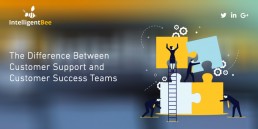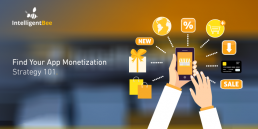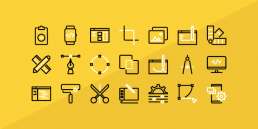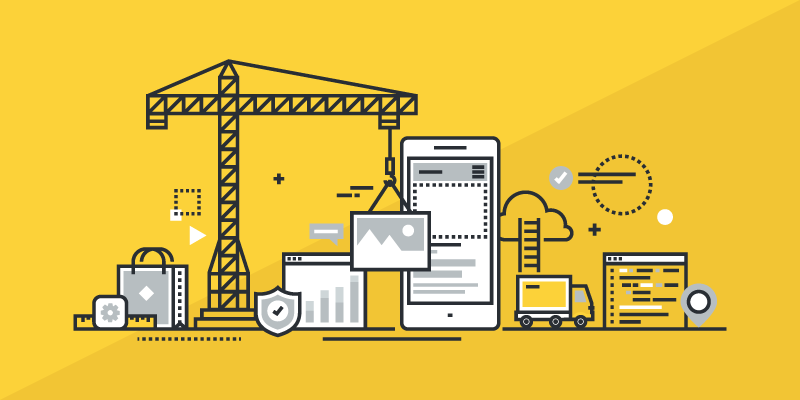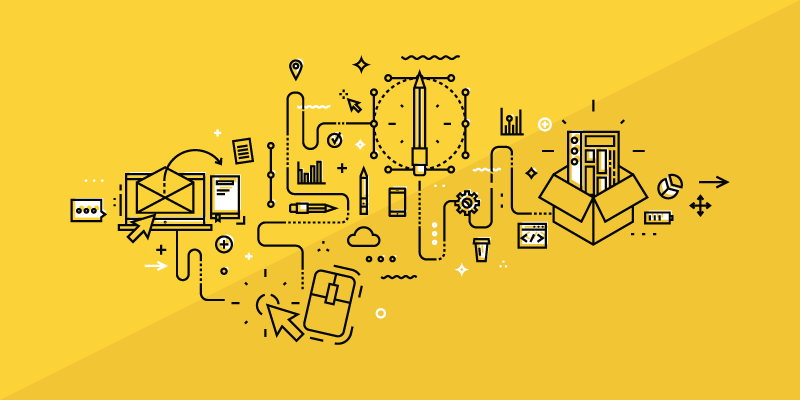Experience has it: 10 best practices for outstanding customer support services
Outsourced customer support is the future. Whether you’re a startup or a company with more than 100 employees, the need for customer support is rising due to the fact that products aren’t perfect, yet we aim for perfection when it comes to our services. “How can you remain on top of the game in the field of customer support?” is a question we hear a lot lately and we wanted to share with you 10 best practices that we learned in 7 years of experience with partners such as SendGrid and Cloud Elements.
Before we start, let us underline once again the idea of a customer support department. Whether it’s in-house or outsourced, the customer support department of a SaaS company should reduce customer churn. The product or service can be outstanding, yet the technical support that you are offering is crucial in your relationship with your customers. After more than 7 years of work with SendGrid and Cloud Elements, we gathered 10 best practices that will set you ahead of your competitors.
1. Hire the best people to represent your service/ product.
We can all agree that your agents are your brand’s diplomats. You form and maintain connections through them with the customers that will keep you in business. Hire and retain experienced people and exceptional outsourced customer support will follow.
2. Offer customer support on more than one channel, including live chat.
Instant communication channels can save or ruin the image that a client has about your product/service. When it all comes to customer’s expectations, the best way to offer a quick and helpful answer is through chat. Make it easy for customers to interact with you and don’t keep them waiting.
3. Encourage self-service.
More than 67% users prefer a self-service support over speaking to a company representative. It’s a fact that can be turned around in your favor once you create a FAQs page with content that answers common questions that customers usually come up with. From a FAQs page to regularly posting basic troubleshooting articles on your website, encourage self-service and you will receive a better feedback for product or service enhancements.
4. Attitude is everything.
When working on a customer support service, your positive attitude can turn a problem into a solution in no time. You know that in business, you never get a second chance for making a first good impression. Have the customer in mind and deliver responsive and personalized support.
5. Listen to customers.
The key to effective communication is active listening. Even when the customer is upset or angry, your customer support agent should treat him cordially, eager to give advice and to find a real-time solution. If you’re active listening to your customers, not only you will find more about the issue encountered and you will give better advice, but you will leave an imprint in your customer’s mind.
6. Ownership can change an issue into a solution.
Empower your representatives to make decisions in real time and to act upon customer’s best interest. If the issue needs more information in order to be classified as resolved, your customer support agents should follow up and address the issue further on until it’s resolved.
7. Honor your commitments.
Do what you say you will do. Earning trust and respect are key-points in the relationship between a company and its customers. Tell your customers exactly what they can expect from you and then go hard to exceed those expectations. That way, your customers will see that you’re willing to go the extra mile.
8. Set KPIs.
It’s important to always measure the success of a customer support team. For that, use KPIs and metrics that should be defined as parameters in judging the performance of a customer support agent or a technical support team.
9. Regularly train your agents.
Properly training your representatives can give them the power to make on-the-spot decisions that can change an issue into a solution. Ensure that they completely understand the product and the process and conduct refresher training sessions when there are any product enhancements. A well prepared customer support agent is a key point in maintaining your customers happy.
10. Ask for feedback.
A feedback at its time can change the path of your company. A study by The George Washington University from Washington, DC, shows that users will share their experiences with 8 out of 10 persons they meet. Ask customers to review your service after each session in order to find out if it was helpful or what aspects you should change.
Customer support in this century is the secret weapon of every business that respects itself. Without a customer support department, you can’t have a business that it’s focused on the customer, therefore you can’t really grow. For an outstanding customer support service, follow these best practices that we gathered in 7 years of experience.
We would love to hear about your experience and how they worked for your business.
7 PHP IDEs for 2018 Software Development
As we mentioned in our previous article, PHP remains a crucial programming language in 2018 as a result of its flexibility in building Saas and Paas solutions from scratch. And since the only way you can continue to be competitive and productive as a developer is to write effective code, we consider useful to gather the best IDEs that will streamline your PHP development process.
PHPStorm
With this IDE, PHP developers can build complex web apps faster, whether they are working with Symfony, Drupal, Wordpress, ZendFramework, Laravel, Magento, Joomla!, CakePHP or Yii. PHPStorm allows command execution between the host and remote servers through its built-in terminal. This IDE remains a popular one because it can deeply understand code structure and has the best code compilation, refactorings, on-the-fly error prevention and more. PhpStorm it’s available on Microsoft Windows, Mac OS X, and Linux.
Among the features that make PhpStorm the best IDE for PHP are also included:
- Code quality analysis
- Syntax and error highlight
- Rich and Live editing for all Front-end Technologies
- Essential and powerful built-in tools for debugging, testing and profiling
- Easy-code navigation & search
- Code re-arranger
This year, PhpStorm announced some updates regarding:
- PHP Language: inline function/method refactoring, code refactoring to functional style, configurable unchecked exceptions or hierarchy checks for class aliases
- Testing: creating classroom test, better code coverage and gutter icons for running tests
- HTTP client: assertion support and a first start simplified
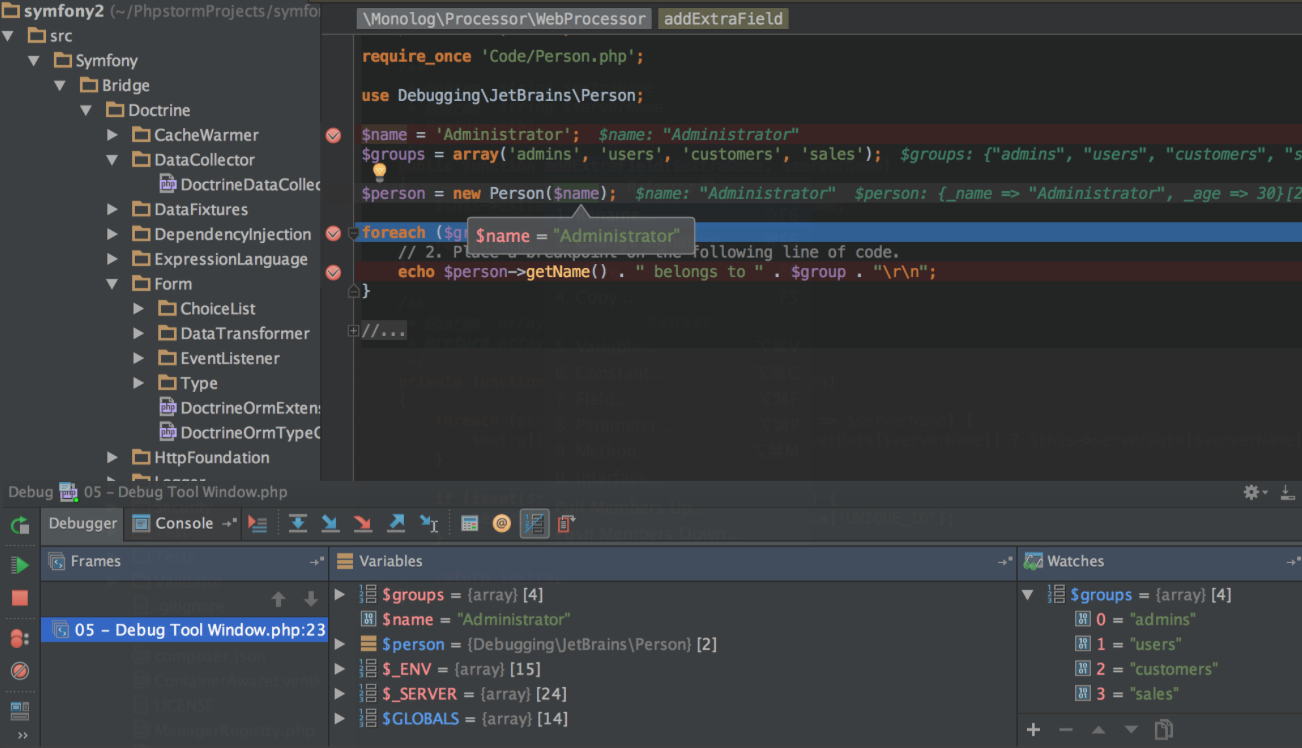
Netbeans
PHP developers continue to use Netbeans in 2018 because is an open source IDE and has a modular design so it can be extended by third-party developers. Moreover, it’s lightweight and much faster than other similar tools in building large-scale multi-language websites and has useful features like:
- Smart code compilation
- Support for embedded applications
- Built-in debugger
- Code templates and code generation tools, such as “getter and setter” generation, refactoring, parameter tooltips, hints and quick fixes
- Inbuilt database connection
NetBeans runs on Microsoft Windows, Mac OS X, Linux and Solaris and supports other languages besides PHP such as Java ME & SE, Javascript, HTML5, C/C++, XML or Groovy.
Aptana Studio
Aptana is an open source HTML editor with full PHP support for creating savvy web apps and advanced features like code assistant, integrated debugger, built-in PHP Server, Auto Indexing and Code Formatting or syntax error annotations. A differentiating feature of Aptana is that it also allows multiple protocols including FTP, SFFP, FTPS and Capistrano. Additionally, Aptana offers support for DOM & CSS besides PHP.

Eclipse
Eclipse is widely known thanks to its flexibility and for their Java IDE, C/C++, Javascript, and PHP IDEs built on extensible platforms in order to create desktop, web and cloud apps. Among the numerous supported languages, we mention Java, Javascript, C, C++, Rub, Ruby on Rails, Python, Rust, Scala, Groovy, and Php. Its features also include automatic error reporting, support for git-flow, GUI and NonGUI based applications as well as multi-platform support with lots of plugins.
Komodo
Created by ActiveState, Komodo IDE became popular as a result of its many extensions and pipe features like code profiling, built-in code collaboration or the HTTP inspector which lets you inspect HTTP traffic from the IDE to the Websites. With Komodo, developers can easily find documentation on common PHP functions by selecting them and invoking the documentation tool.
Top companies such as Siemens, Tesco, Nasa, Bank of America or Alcatel-Lucent use Komodo IDE.
ZendStudio
ZendStudio has an intelligent user-interface and all the current features for successful PHP development. Mainly, it can debug web applications, CLI applications and supports PHP Unit test.
With ZendStudio developers can also perform static code analysis using a rich set of rules for finding issues in their code as they type it. The team can write code faster, easily debug projects and can use PHP7 or other advanced interpreters. Moreover, it offers support for CMS like Wordpress and Joomla, for indexing and searching PHP Code and for Cloud Servers like Azure and AWS.
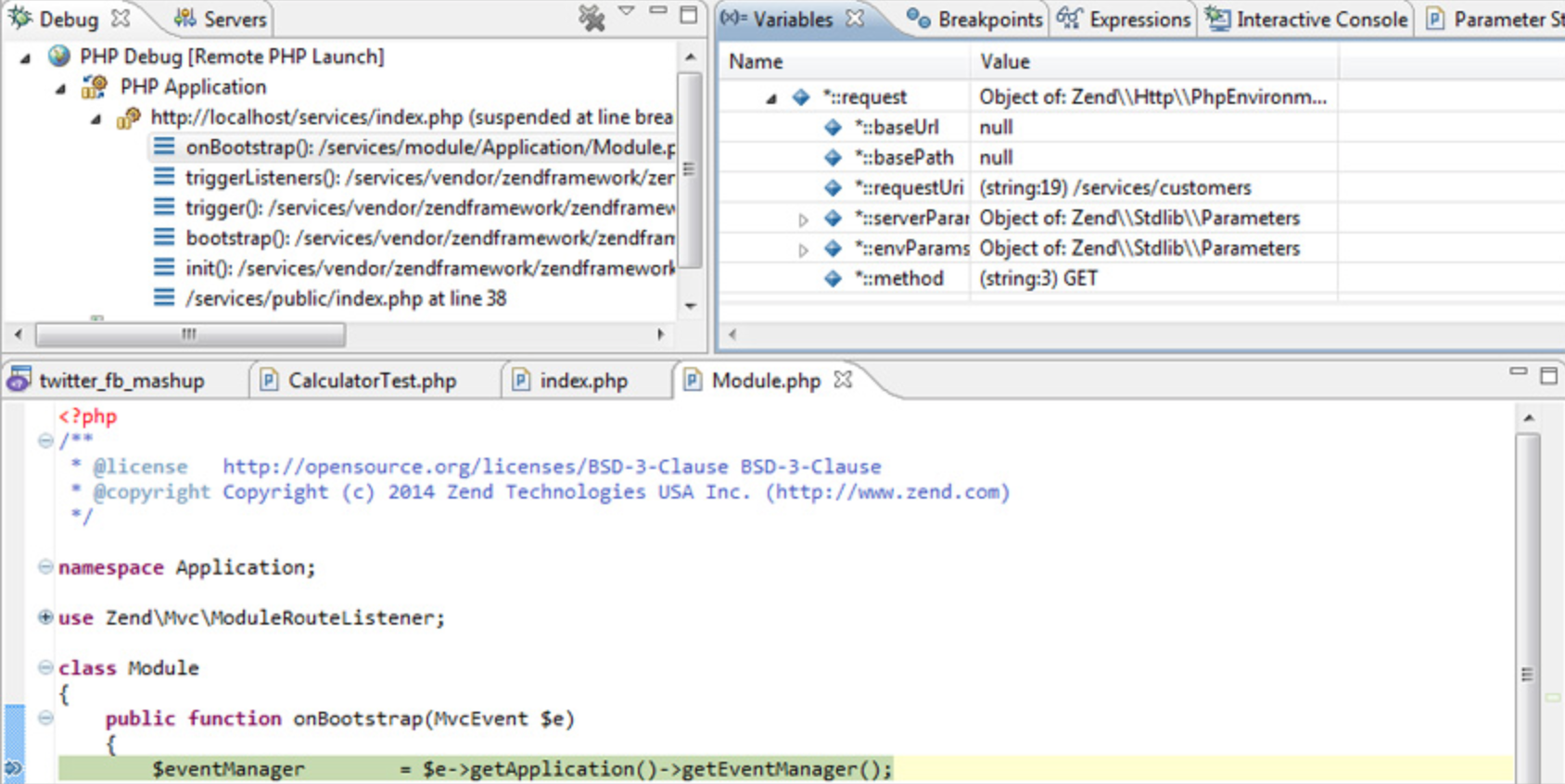
NuSphere
Nusphere PhpED is a balanced combination of an advanced code editor, reliable debugger, and productive database connectivity. That makes it a suitable and complete solution for PHP development. NuSphere key features include code insights for PHP, conditional breakpoints, ability to change current execution line, embedded SSH client or the ability to profile code in terms of performance and memory consumption.
Final Thoughts
It’s important to choose the right IDE in order to produce and maintain high-quality code. And since PHP remains a reference point as a back-end programming language, I hope you find this list of IDEs helpful in writing your PHP code, whether you are a beginner or a professional user.
The Difference Between Customer Support And Customer Success Teams
When we talk about your business product or service, there is no doubt that both support and success teams are considered as essential assets for the entire customer lifecycle. Since customer support and customer success are often intertwined, we think that is critical to define and understand their differences and roles, especially when your company’s output is based on a certain tech infrastructure.
Customer support – A necessary way to be there for your customers.
Dedicated support teams pursue to ensure customer satisfaction through ongoing technical support for a certain product or service. These kinds of teams solve customer’s challenges, questions and concerns regarding individual issues and provide technical guidance. For a better understanding, we should define a couple of specific traits.
Removes obstacles
Regardless of the customer support channel – email, chat or call – the team in charge solves their problems as soon as customers submit a ticket or send an email, not before. Thus, the role of customer support is to meet their needs in a reactive manner, meaning that whenever an issue emerges they take care of it. In this way, a support team removes any kind of obstacles when it emerges in customer’s direct interaction path by providing necessary resources such as documentation or self-service portals.
Focuses on cost
The number of favorable customer experiences is inversely proportional to financial losses. In other words, based on Nicereply point of view, if a support team provide efficient solutions for customer’s problems, the churn rate, which means here the annual percentage at which customers stop subscribing to a service, will be reduced. However, support teams aren’t strictly a centered-cost department, as originally built, they can also impact revenue by advising on common reasons for churn or identify upsell and cross self-opportunities in their conversations with your business customers.
Has short-term objectives
According to Hubspot, support interactions are transactional which means when a customer submits a certain issue or question, those are solved by a support assistant – and may have in view immediate technical or usage issues. After all, the main purpose of support teams is to solve specific issues as quickly as possible in order to drive customer satisfaction, which is the main baseline for success teams.
Customer success – The next step in scaling customer experience.
From Gainsight perspective, customer success manages company-customer interactions and aligns client and vendor goals for mutually beneficial outcomes. Success teams influence revenue through their proactive actions in order to accomplish long-term objectives, but we will talk about all of these attributes below:
Uses proactive strategies
The main objective of a success team consists in initiating conversations with your customers before they contact you. Therefore, they have to be proactive, meet their needs, anticipate them and identify opportunities to solve problems that they are not yet confronted with, but they might be. Identifying these solutions in advance must be based on the company’s long-term objectives. Their job is to make sure that customers understand the full potential and value they can achieve from your product/service. In other words, success teams ensure insights-access for users regarding the most efficient way to use your solution and adopt it on a long-term.
Focuses on revenue
In this context, when we talk about scaling your business, customer success teams play their main role. They focus less on technical issues and more on the aspects that are directly related to business development. So they drive expansion via churn-reduction as in decreasing the number of unsubscribed customers and up-selling, cross-selling, referrals techniques in order to promote your business solutions.
Customer Success provides a whole mechanism not only for uncovering upsell and cross-sell opportunities but also for gaining advantage from them. Besides that, it’s the most desirable way to initiate reduction, helping subscription growth for a certain product or service.
Has long-term objectives
Success team’s interactions don’t have an end-point. As we mentioned earlier, they look at the entire customer’s process lifecycle in order to solve universal adoption issues and other common narrows that prevent users from achieving their goals. Moreover, as Gainsight believes, ensuring customer success brings about a significant positive impact on businesses as they focused on increasing retention, repeated purchases or lifetime value.
Different roles, same team
To conclude, support and success teams provide services for customers and help them generate value for your company. Both of them focus on successfully integrate the product or service in your users’ lifecycle with each aid, improving retention, boosting value, and increasing advocacy. The best businesses succeed in bringing support and success together, leveraging their differences to consolidate this entire process of removing obstacles that prevent your business customers from achieving their goals.
Firebase integration for Golang
Since Golang is considering a lightweight programming language and Firebase is the next-generation Backend-as-a-Service, we think it could be a savvy combination to develop with ease both performant and secure microservices or stand-alone projects. Here are several advantages that could convince you to try this combo.
When it comes to Golang, it is as speedy as a compiled language, but it feels like an interpreted one. Moreover, as we mentioned in one of our previous articles, it has clean syntax with text-based workflow and clear language specification. Thus, you can write the code fast, and even faster compilation speeds are allowed for a rapid feedback style.
On the other hand, Firebase is an all-encompassing product that has everything you need to develop. From a real database to authentication modules. when you connect your app with Firebase, you’re not connecting through normal HTTP, but through a WebSocket which is much faster than HTTP and sends you new data as soon as it’s updated.
Firebase Storage provides a simple way to save binary files to Google Cloud Storage directly from the client thanks to its own system of security rules to protect your GCloud Socket from the masses while granting detailed write privileges to your authenticated clients.
Regarding Authentication, Firebase Auth has built in email/password authentication system. It also supports OAuth2 for Google, Facebook, Twitter and GitHub. Moreover, Firebase Auth integrates directly into Firebase Database so you can use it to control access to your data.
Last but not least, Firebase includes an easy-to-use hosting services for all your static files that serve them from a global CDN with HTTP/2 making your development particularly painless.
Firebase admin SDK for Golang
The Firebase Admin Go SDK enables access to Firebase services from privileged environments (such as servers or cloud) in Go. Currently, this SDK provides Firebase custom authentication support.
To install Firebase Admin Go SDK, simply execute the following command in a terminal from your $GOPATH:
go get firebase.google.com/goFirebase Admin SDKs enable application developers to programmatically access Firebase services from trusted environments. They complement the Firebase client SDKs, which enable end users to access Firebase from their web browsers and mobile devices.
And that’s only the beginning. To explore further, here are 4 Go libraries and apps for Firebase that we think you will find useful:
Go-fcm - Firebase Cloud Messaging (FCM) Library using Golang (Go). This library uses HTTP/JSON Firebase Cloud Messaging connection server protocol. Its main features are: send messages to a topic, send messages to a device list, message can be a notification or data payload, supports condition attribute (fcm only), instance Id Features
Examples:
Send to A topic
package main
import (
"fmt"
"github.com/NaySoftware/go-fcm"
)
const (
serverKey = "YOUR-KEY"
topic = "/topics/someTopic"
)
func main() {
data := map[string]string{
"msg": "Hello World1",
"sum": "Happy Day",
}
c := fcm.NewFcmClient(serverKey)
c.NewFcmMsgTo(topic, data)
status, err := c.Send()
if err == nil {
status.PrintResults()
} else {
fmt.Println(err)
}
}Send to a list of Devices (tokens)
package main
import (
"fmt"
"github.com/NaySoftware/go-fcm"
)
const (
serverKey = "YOUR-KEY"
)
func main() {
data := map[string]string{
"msg": "Hello World1",
"sum": "Happy Day",
}
ids := []string{
"token1",
}
xds := []string{
"token5",
"token6",
"token7",
}
c := fcm.NewFcmClient(serverKey)
c.NewFcmRegIdsMsg(ids, data)
c.AppendDevices(xds)
status, err := c.Send()
if err == nil {
status.PrintResults()
} else {
fmt.Println(err)
}
}Firebase-server-sdk-go - This is the Server SDK written in Golang for the newly announced Firebase suite of services. This SDK, like its Java and Node counterparts, supports the following functions needed on the application server: Authentication, Real-time Database, Cloud Messaging (FCM)
Examples:
Create Custom Tokens
To create a custom token, pass the unique user ID used by your auth system to the CreateCustomToken() method:
auth, _ := firebase.GetAuth()
token, err := auth.CreateCustomToken(userId, nil)
You can also optionally specify additional claims to be included in the custom token. These claims will be available in the auth/request.auth objects in your Security Rules. For example:
auth, _ := firebase.GetAuth()
developerClaims = make(firebase.Claims)
developerClaims["premium_account"] = true
token, err := auth.CreateCustomToken(userId, &developerClaims)Verify ID Tokens
To verify and decode an ID Token with the SDK, pass the ID Token to the VerifyIDToken method. If the ID Token is not expired and is properly signed, the method decodes the ID Token.
auth, _ := firebase.GetAuth()
decodedToken, err := auth.VerifyIDToken(idTokenString)
if err == nil {
uid, found := decodedToken.Uid()
}Fireauth - A Firebase token generator written in Go
cosn/firebase - This a library for invoking the Firebase REST API.
In conclusion, a combination of those two can lead you to solid and scalable application development. Golang might be the perfect solution to scale your idea, while Firebase has all that you could need to begin a worthwhile business solution or to launch your current configuration forward on the right track.
5 web development trends to look up in 2018
For succeeding in digital-based industries it's vital to accept tech changes and ride along with it. You can do this by exploring tomorrow's trends and seeking to integrate them into your business plan. And, when it comes to web development trends, sometimes they change faster than they can be implemented. That’s why it is important to be ahead of the game.
So, here are some in-demand web development trends that we believe you should look up this year:
1. Javascript
In our previous article, we underlined that Javascript continues to dominate on software development industry. Its position is strengthening even more in the last few years thanks to dozens of JS-related technologies existing and still in development. Now we are not just making small interactive elements in web pages anymore, we are building complex applications in JavaScript. And, it became more complicated to grasp the size and scope of the current JavaScript ecosystem.
One of the main items that benefit from the recent Javascript improvements, such as ES6 and ES7, is Functional Programming. Some useful improvements for functional programming are:
- Arrow functions: Arrow functions reduce boilerplate when writing functions.
// functional ES6 const numbers = [1, 5, 8, 13]; const doubledNumbers = numbers.map((number) => number * 2);
- Object/Array Spread: Object spread makes it really easy to avoid mutating objects because it is so much easier to create new objects that contain existing values.
// old school
var oldState = { email: 'foo@example.com', comment: 'i really like javascript' };
var newState = {};
Object.assign(newState, oldState, { ip: '192.168.5.87' });
// with spread
const oldState = { email: 'foo@example.com', comment: 'i really like javascript' };
const newState = { ...oldState, ip: '192.168.5.87' };- async/await: Their purpose is to simplify the behavior of using promises synchronously and to perform some behavior on a group of
Promises.
ReactJS will also have an important role to play in 2018 thanks to its versatility. React keeps winning customer satisfaction surveys and according to indeed.com, React is the first library to pass jQuery in job popularity in a decade.
Moreover, the rise of Node.js has made JavaScript boundless. With the help of Node.js frameworks, JavaScript can be used in front-end, web server, desktop application, embedded system, databases and so on. And, in 2018, there are some Node.js Frameworks that will stand out:
- Express consists of features that assist in building a very powerful web and mobile apps as well as APIs. Extension package or plugins can be written in Express easily and be used quickly.
- Sail.js (node.js mvc) is an ultimate solution as it comes with features that can build anything. It also makes database work easier irrelevant no matter what database is being used.
- KOA handles flow control, error-handling and omits callback issues with the help of generators. It consists of modular approach and allows the user to write codes their own way to make it robust.
- Meteor assists you build web and mobile apps through JavaScript. It has only one API which is utilized in both, client and server side. You can make a connection with anything with the database through its DDP protocol.
- Derby.JS consists of Racer, a data synchronization engine, that assists in swift data sync amid database, sever as well as a browser.
2. Golang
Even though JS will still hold their superiority in 2018, Golang will strengthen its position - it is just the question of time.
Why is Golang became one of 2018 web development trends?
- Development is fast, secure, and provides cross-platform support
- The language is developed by Google and well-financed which guarantees its regular improvement.
- Huge collection of open source packages and free official guides
- It is the language of cloud infrastructure. Go is a part of Google Cloud, Microsoft Azure, AWS, Dropbox.
As we talked in one of our previous articles, Golang is a language of cloud industries and open source development. Both Cloud and OpenSource technologies are definitely going to grow in next 5 years - and Go programming is a perfect way of implementing these solutions.
Golang has 8 years on the market - so it’s relatively new. However, OverStack and GitHub statistics state that the number of Golang developers is already huge, and it is only going to grow.
3. Real-Time Apps
Real-time web apps, based on WebSockets, have been around for years, but they are getting more and more popular. The reason: users want fast interactions and real-time web apps are delivering on the need to share information instantly.
The main idea of real-time web apps is that a connection between client and server is left open, and the server pushes the new data once it’s there. Prior to real-time web apps, clients had to check back manually to find out if something new had happened.
While this has been very common in the world of Node.js, this trend is really spreading to other languages and frameworks as well. Even Ruby on Rails, a framework which has always relied heavily on server side rendering, and very long ignored the rise of Javascript single-page-applications, has seen the need for real-time (as you can see in Basecamp 3), and incorporated it under the name “ActionCable”.
4. Chatbots
As you probably noticed chatbots gained incredible popularity in 2017. And they will continue to evolve helping to increase communication online.
With chatbots, a company can provide a personalized experience that will enhance the quality of service through instant customer service 24 hours a day. In fact, many have predicted that 85% of all customer interactions will be done without human assistance by 2020.
It means that the customer service/care chatbots should turn into an essential aspect of every website this year. Nowadays consumers have become excessively demanding and want their issues to be resolved instantly, the customer service/care chatbots should top the priority lists of web development service providers.
5. Progressive Web Apps (PWA)
Not widely known, progressive web apps are similar to native mobile applications. Introduced in 2015, the concept of progressive web apps are anticipated to compete for the native mobile applications in the year 2018. This technology has many advantages, such as the ability to work offline, virtually no load time (because much of the information is stored in the cache of the phone), good reliability, and the ability to receive notifications. These progressive web apps can be designed faster than mobile applications, work for all users, and are generally easier to deploy and maintain, which is good for both the developer and the user.
This can maximize conversion rate by enabling the users to browse the Internet even when they are not connected to the Internet. However, despite being a relatively new technology, the progressive web application will continue to progress in 2018.
In conclusion, it's important for businesses to have both a strong online presence and competitive spirit, but also a flexible strategy based on web development trends in order to attract new customers, satisfy existing customers and encourage older customers to return.
7 programming languages to learn in 2018
Even if you are a student, a skilled techie or a professional, there are many coding trends to look out and now, more than ever, it’s really important for you to stay up to date with the most in-demand programming languages in the industry.
There are no secrets that many companies are expecting from you nothing but the right skills for developing the next functional web application and if you keep up with one suitable programming language, you can increase your value on the market.
So here are 7 languages that you should bear in mind for 2018.
Javascript continues to dominate
JavaScript has become one of the most popular programming languages in the world and number 1 on GitHub in terms of pull requests thanks to the ubiquity of web browsers. Now, it’s used by over 80% of developers and by 95% of all websites for much dynamic logic on their page.
When you want to create interactive things for the web, Javascript is the way to go. You’ll see substantial results from your coding efforts in no-time.
Because of its core simplicity, more startups and tech businesses are starting to use JavaScript on the backend via the Node.js framework. Node is an open source run-time environment that allows JavaScript code to be run on the server side, allowing web developers to use one language for an entire web app.
Phyton is on the rise
Python is a general-purpose programming language used for web development and as a support language for software developers. Its popularity is driven by the continued growth and demand for machine learning developers, because is widely used in that area, as in scientific computing and data mining.
Because uses indents instead of curly branches for grouping blocks of code, the structure is extremely convenient and clean. That’s why Python is a great start for beginners and allows them to easily develop a project and further support it.
Python is a multi-paradigm programming language that means OOP and structured programming both supported. Also, it supports modules and packages which encourages program modularity and code reuse. Since there is no compilation step, the edit test debug cycle is incredibly fast.
Debugging Python programs is easy: a bug or bad input will never cause a segmentation fault. Instead, when the interpreter discovers an error, it raises an exception. When the program doesn't catch the exception, the interpreter prints a stack trace. A source level debugger allows inspection of local and global variables, evaluation of arbitrary expressions, setting breakpoints or stepping through the code a line at a time. The debugger is written in Python itself, testifying to Python's introspective power. On the other hand, often the quickest way to debug a program is to add a few print statements to the source: the fast edit-test-debug cycle makes this simple approach very effective.
Swift, a more approachable language
Swift drops legacy conventions. Thus, you no longer need semicolons to end lines or parenthesis to surround conditional expressions inside if/else statements. Method and function calls in Swift use the industry-standard comma-separated list of parameters within parentheses. The result is a cleaner, more expressive language with a simplified syntax and grammar.
Swift drops the two-file requirement. Xcode and the LLVM compiler can figure out dependencies and perform incremental builds automatically in Swift 1.2. As a result, the repetitive task of separating the table of contents (header file) from the body (implementation file) is a thing of the past. Swift combines the Objective-C header (.h) and implementation files (.m) into a single code file (.swift).
Swift has an edge over its competitors as it also hosts the Automatic Reference Counting (ARC), a well-known feature which tracks down and manages an app’s memory usage in real time to make sure it’s not taking too much memory.
PHP. Oldie, but goldie.
We know that there aren’t many fans of PHP, but it is still going to be really crucial in 2018 because it’s a flexible programming language that can be used to develop anything from a single-serving site to more complex web structures with the same ease.
Because many of you know how to write PHP, instead of talking about its traits, we would like to say something about one of it’s high-performance frameworks - Symfony.
Symfony is a set of reusable PHP components, enabling the developer to create scalable, high-performance applications. With 30 components from which to choose, the developer has the complete freedom to experiment and work in a RAD environment. Symfony APIs also enable easy integration with third-party applications, and it can be used with popular front-end frameworks, such as AngularJS.
Many popular projects, including Drupal and phpBB, also use Symfony framework. In fact, Laravel, the most popular PHP framework, is build off of Symfony.
Golang is a Go
As we saw in our previous article, more and more companies are going to start from scratch with Golang.
We believe that Golang demand will increase even more in 2018, so if you're willing to invest some time learning Go language, and become an expert, definitely it will be the right choice in your career path.
Golang is used in designing toolbox, documentation of browser, search engines, source indexing, analysis, and search. So, it will be beneficial for securing a good earning package by learning this language. Definitely, Golang is a great language for systems that need massive scale.
It’s also a garbage-collector language which means you don’t need to free up memory yourself. So you don’t have to do any memory management yourself. If you’re a C or C++ programmer, you know how tiresome it can get to manually allocate and free-up memory, so you don’t have to do any of that with Golang.
Ruby. The right choice for startups.
Ruby operates as a dynamic, object-oriented language and it makes the code easy to read. Its demand is increasing so much that’s become common within DevOps roles. i.e. engineers ensuring the reliability and efficiency of the servers running websites with high traffic.
But first, Ruby has an incredibly simple beautiful syntax that allows a developer to do more with less code. Secondly, thanks to Ruby on Rails, getting a web application up-and-running takes less time than in other frameworks. This explains why startups are so fond of the language: it enables the famous startup mantra, “move fast and break things.”
Obviously, you don’t have to know all of them. Pick one depending on your interest and get really good at it.
3 reasons why you should grow with Golang
Why Golang became the way for many companies?
Let’s start answering to this question through an imagination exercise. Did you ever confront with that kind of frustration of dealing with complexity generated by very large teams of people working on very large pieces of software written languages with large feature sets? Well, as you might know already, Golang was created to solve that kind of frustration. Then, why not using it to increase your business?
In the end, Golang is your friend, but not your friend at a party asking you to take a taxi back home, it is your friend at an intervention telling you that he’s thrown all the alcohol out of the window. BBC Worldwide enjoyed such a friend when it implemented Golang in different areas, as a backend for different games (mobile and social) in production and development, Social Media crawlers and scrapers for an internal analytics product and web services that front various object stories.
But how exactly will that kind of friend help your business? Let’s find out from other small and middle businesses that grew with Golang.
A faster development process
Golang has the speed of a compiled language, but the feel of an interpreted language. Moreover, has clean syntax with text-based workflow, minimalistic design, and clear language specification. Thus, you can learn a language and become productive real fast. You can write the code fast, and even faster compilation speeds allow for a rapid feedback style. And speedy development means saving time and money for your company.
For example, Dnsimple found operation Golang processes in production to be relatively painless. They used their own flavor of continuous delivery. Actually, deployment was a breeze, and they had the application running in production shortly after deciding to do so. Both memory and CPU usage are at least an order of magnitude lower than the Ruby application they used before Golang.
Another business that chooses to grow with Golang was Toggl. They decided to re-implement some part of their backend with it. So far, it has paid off, as the development process was fast, and deployment surprisingly simple. The resulting code was a big improvement in terms of speed.
Mender also discovered that Golang has more core languages features and libraries that allows much faster development of applications. This means that more Mender features had been developed for the community and users much faster than if C was chosen as the main language. As it is a compiled language, Golang runs natively and very efficiently on embedded devices. Moreover, it provides wide platform coverage from cross-compilation to support different architectures.
And one of Heroku favorite productivity gains was provided by Golang’s source formatter: gofmt. Deploying Doozer was satisfying simple. Golang builds statically linked binaries which means Doozer has no external dependencies.
In the end, you’ll have a product much more performant in terms of CPU load, memory usage and more. The reason is that Golang is focused on fast compiling and faster runtunes. For Digg, their average response time from their service was almost cut in half, their timeouts were happening on time and their traffic spikes had minimal effects on the service.
Minimum maintenance costs
Even if switching to Golang will cost your business in terms of initial development time, you’ll recoup that time in maintenance costs. Which is usually way more than the time to develop a feature.
Golang is lighting fast, and it’s perfect for serving up your applications. In fact, it’s so efficient that Moovweb not only built some small part of their platform in Golang, but now it is the heart of their tech. Their SDK is a compiled binary that they pack and send out to their clients and integration partners. Their production system is handling millions of pages a day and millions of dollars of e-commerce a month. And as Digg was having difficulty with handle fast their requests for their platform, they moved to Golang as well. With their Golang upgrade, they’ve been able to handle 200 requests per minute and 1,5 million S3 item fetches per day.
Another powerful aspect of Golang is the way to which it hands object orientation. Golang has a notion of an interface used to identify a capability of an object and where it can be used. CloudFlare explored its advantage in their own work. Moreover, at CloudFlare, goroutines are now handling both the multiplexed Internet connections (of which there could be many between a single CloudFlare data center and their client) and the connections needed to get content from origin web servers and provide the content back to the nginx server that sends it on to the web browsers.
Golang and an easier HR process
When it comes to HR in a business focused on web development or depends on this activity, using a functional language make hiring and training new people more difficult. But not anymore, thanks to Golang because it’s concurrency makes writing software that must scale up and down very easy.
While the pool of Golang developers is definitely smaller from what we’ve seen, the people who are excited/knowledgeable about Golang tend to be developers who are truly interested in learning new things and pushing the envelope.
Because of the simple fact that is open-sourced and much more simpler than other languages, Golang makes developers feel that is in more control over the product that he is creating or maintaining. Golang has libraries for HTTP, raw network connections, URL manipulation, TLS, many different types of serialization systems, cryptographic hashing, compression, and the more mundane string manipulation, date/time, and logging. He will feel like in case of problems, he doesn’t depend on the creator to fix his issues.
For example, Movio discovered for the first time ever, that they actually can read the language spec when they were unsure of how something works. That’s how simple it is; the spec is readable. An approachable and complete guide to the language strengths developer confidence in making assumptions while following a piece of code and in justifying their decision-making rationale.
It the end, your business will gain in terms of time, reputation and money if your developers aren’t fighting the language they have to use in developing products. Take a look at Moovweb. They remote all their internal software in Golang and they saw how fast new users/employees have learned it.
In conclusion, Golang code tends to look ready for the public much sooner than most other languages, it provides a much stronger feeling of comfort to the developer, and the community embraces small-simple solution over big-sophisticated ones.
App Monetization Strategy 101: How to Set Your App for Success
The first rule to find a good mobile app monetization strategy is that there is no one-size-fits-all kind of solution. If you’ve landed on this page looking for that, there is no miracle we can work out for you.
But if you have an app idea and you’re thinking of turning it into reality, there is a series of questions you should answer to first.
Before anything, you should know as much as you can about your target audience:
- who they are
- why they need your product
- what kind of needs you can solve and
- how they can be delighted in the long run.
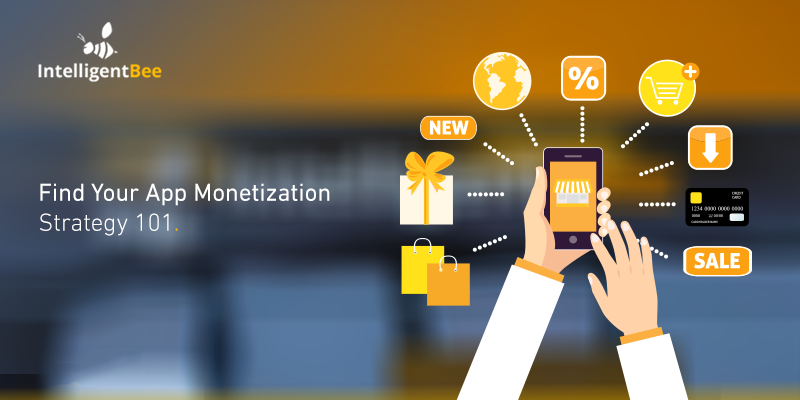
After you’ve figured out the way who your audience is and the best way to get to it, you should start thinking of app monetization strategies.
Many next-to-brilliant business ideas die before blooming because their creators failed to take the time to think of a good, old long-term plan before putting pen to paper. Approximately 80% of startups fail because they don’t pinpoint key points of the business plan.
In order for your app to gain traction, you will have to think of a business model that is based on user-added value. One of the most important indicators of this business model is the way you are going to generate revenue from your app.
At this moment, approximately 2% of the existing apps account for more than half of the money generated by app users. To count yourself in, you’ll have to come up with a solution that will answer some important long-term questions, featured below. As most of the American smartphone users still download zero apps per month, there is room to develop the app market even further.
Who is your target audience?
To answer this question, you will have to start building user personas for your app-to-be. As much as your product will provide a significant advantage to a niche audience, you can’t afford to have a single persona interested in your product.
A persona is a fictional person that represents an entire group of people, with the same characteristics that make it a potential client of your app. When promoting a product, marketing and salespeople use personas to make the communication more personal and to understand the reasons that would make a target segment consume your product.
Each persona will have a name, a job, a relationship status, interests and passions and everything that makes it real enough for you to relate to its needs.
Once you’ve established the problem that you are going to solve for each persona, communicating about your product will be much easier, as you can focus on efforts on offering a specific advantage.
If you’ve got an app idea that you think will be the next big thing among your target audience, but you can only think of one homogenous group of people who may take interest in that product, one of two things may be happening:

A) You haven’t divided your audience well enough.
The way you segment your audience can become really important. While everybody who uses your product will get the same features, in the end, the advantages these features bring them can make the difference between choosing you over your competitors.
Because of this, it is highly relevant to position yourself differently for different parts of your audience. Suppose you have developed an app that identifies your location. While all the users will be getting the same thing out of your new product, their advantages differ significantly. Parents will be happy to know where their children are, teenagers will be glad to stalk that girl from class who they’re afraid to confess their love to, and young people will find it easier to catch up with their friends during lunch break.
Your product won’t appeal as much to young people aged 27 to 35 if you’re presenting your product as an app that allows you to stalk your crush from the comfort of your home. To make sure that you haven’t forgotten any audience segment, think of all the possible reasons why different people may enjoy your product.
Once you’ve done that, arrange these audience segments in the order of their importance. Who are the two or three personas that may make your app popular? Who is the persona that’s most likely to pay for additional features of your app?
Depending on the answers to these questions, you will later start drawing short-term and long-term objectives that you’ll link to different personas, as well as the concept that will best encapsulate your product’s identity.
B) You have only identified a segment of your potential audience.
If the entire audience you’ve identified consumes your product for the same advantage and you cannot differentiate between segments, you should start looking for other potential targets for your products.
There is virtually no product out there that can be consumed by one homogenous group of people. Once you’ve made sure that your audience can’t be broken down into more specific sets, you should think of other people who could take an interest in your app.
What is different about your product?
In order to make your product stand out from all the other millions of apps in the play store, you have to identify the advantage or set of advantages that would make users choose it over competitors’ products.
Designing a functional app simply isn’t enough if you have monetization in mind. The best start point for this is to chart your competitive position.
Look for all the actors on the market and see what they brought different to the table. Identify what’s missing for a better overall interaction of your user with the app, and try to provide it to your target audience.
Why is your differentiator a relevant advantage for your target?
A product that is just different will never generate revenue (or it will rarely do and everyone will be either amazed or appalled). Having a functional app that generates revenue is a matter of sweating and laboring and steady growth.
The reason this difference you ‘come up with’ matters is that your target audience should choose your app because of this specific feature that all the other apps managed to ignore, despite it being crucial for the user experience.
After you’ve gone through all these steps, it’s time to check the most important monetization strategies that you can use for your app.

In-app Ads
The mechanism behind this strategy works well for services that people don’t have the incentive to pay for. Depending on how much value it has or how industry-specific your application is, you may want to take this app monetization strategy into consideration.
Let’s see how it works:
- When downloading the application, users will provide data enrichment platforms with information about their behavior, interests and a general user profile.
- The platform sells user profile data to marketers who want to target specific kinds of audiences in their campaigns, in order to optimize ad relevance.
- Marketers place targeted ads into the platform, and they have to pay for app space and exposure, as well as other key performance metrics, such as the number of clicks, how qualified the leads are and how many people actually become conversions after having seen a well-placed, relevant ad.
- The advertising space is data driven and the exposure generates revenue to the platforms. At their turn, these platforms redirect part of their money to the apps that give them advertising space.
- Due to this economic mechanism, users have access inside the apps for free, while app creators can still generate revenue, charging marketers for advertising placement.
When not to use this app monetization strategy
Depending on the app you’re building, you may want to think twice before using this strategy. When deciding what app monetization strategy you should use, the most important thing to take into account is the profile of your persona.
More than just one persona will be interested in your app, as we’ve established above. In this case, you should consider whether any of the personas you’re targeting is willing to pay for the kind of service that you’re offering.
If the app you’re building provides a clean solution to a current problem that your users may experience, you could ask users to pay for a premium service. However, if your app is a small interactive game or a simple solution to a tiny problem that doesn’t interfere with your users’ day to day activities, then in-app ad monetization is a good fit for your business.

In-app Purchases
In order for this model to work, you will have to think of either digital or physical goods or services that you can offer the users who are willing to pay for them. The vast majority of games out there use this monetization strategy, because once a game becomes addictive, users will be tempted to pay for a better experience. Of course, other apps use it too, especially since this kind of monetization is favored by users.
Before getting started with this monetization model, you will have to come up with an elaborate plan for the types of products that you are going to be selling through your app.
If it ever so conveniently happens that your application is a fun, addictive game, your problem is half-solved. The user base will be interested in spending more and more time playing your interactive game and, once they start to feel the frustration of not being able to level up or evolve fast enough, they will be more than willing to pay for a little in-game help.
Suppose your app is actually a carefully organized online store, you should answer a few questions before your application hits the play store:
a) Why should users buy from me and not my competitors?
When answering to this question, you should identify the key advantages that your product has by comparison with your competitors. Finding your unique selling proposition (USP) is a good and necessary starting point. Think of it as one advantage to rule them all.
b) Why should users buy from the app and not the actual store?
This is a legitimate question if you already have a store that you manage efficiently. If people enjoy spending their time browsing through your products inside the store, you should give them a reason why this entire activity should be reduced to a simple online-shopping method.
c) Why buy from the app and not the website?
If you also own a website that’s an e-commerce platform or at least offers users the possibility to purchase items directly from there, you should give them a good reason why they should switch to app. Maybe some promotions or targeting the app to extend your audience to the younger generation should work. Of course, depending on your product, the answer to this question may require more than an educated guess.
d) What upselling strategies can you use to increase your revenue?
Suppose that you are your own user and you’ve made a purchase through the app. You are now the happy owner of a product. The question that should automatically follow is what now?. You have to make sure that the user is delighted with your services even after making a purchase.
Creating an upselling strategy can help you overdeliver to your customer. Before doing this, however, you will also have to offer your customers perks that will keep them engaged. Very often, people who have installed an app for one punctual issue will immediately uninstall it when done. To make sure that this is not your case, find a long-term strategy to help you generate customer loyalty.

Paid/Premium Apps
Premium services usually have a solution to a recurring problem that all the other existing apps didn’t manage to solve up until now.
The premium system allows users to install the app only after having purchased it from the app store. If this is the type of app monetization strategy you wish to go for, you have to make sure of two things:
a) That your differentiator is highly relevant to user experience
Some people are willing to try out new apps, especially if the products promise to solve a recurring issue that the customer has encountered with all free products out there. However, you have to make sure that your user base will continue to use the app after one month, and won’t end up paying for yet another service they don’t use.
The way you delight your customers through your services builds a strong community around your product, one that will work as potential brand ambassadors for your app.
b) That you have a long-term plan of how to scale your business
Review consumer life-cycle and see the logical path a customer will go through when using your service. Supposed your users paid the $4.99 to download the app. The question you should answer to is: what next?
Are you going to focus on building a large community of people who are willing to make a one-time payment for your app and then let them use it without any other process going on? Or are you going to come up with better, exclusive services, that will differentiate between the average user and the pro ones?
In other words, you should consider coming up with a plan to make upsells to the existing users. We’re not saying this is a necessary step. Depending on your business profile and model, it may not work at all. However, coming up with a long-term strategy is part of your business development job description, and you should figure it out before your app is live in the app store.
Freemium Apps
This type of app monetization strategy seems to be working quite well for a lot of business managers out there. Numerous digital products became successful while using a freemium monetization model. From MailChimp to Dropbox, all freemium apps have one thing in common: they understand user needs and have a sustainable growth mentality that drives engagement and credibility.
It is easy for the target audience to use Dropbox knowing that they can scale their business easily and, when that moment comes, they don’t have to switch services, but just upgrade to a paid subscription. The same kind of principle can be applied when it comes to mobile apps.
To know whether this app monetization strategy is suitable for your business, you have to go through three different questions:

a) Is the free app good enough to make customers want to try it out even if they don’t have to pay for it?
This goes further than vanity metrics. Generating a strong user base is not only relevant because of how much revenue they can generate once they decide to pay for your product, but because this builds credibility in your product and the awareness you need to scale your business.
When thinking of their product, many developers will focus on ‘saving’ the best features for the subscription users. While this kind of mentality can work up to a point, the free product should be challenging enough per se to generate a user base.
b) Is the app well enough optimized so that potential premium users will have a good reason to pay for the extra features?
Avoid the opposite pole. In your attempt to make sure that your app will be used by the vast majority of people who won’t pay for the service, you should make sure that the paid service will be valuable enough to generate sales and respond to a need your user may have, whether it is an in-app need (if you’re developing a game, for instance), or a real-life issue that you can solve.
c) With or without the paid features, how is your app different from all the other apps on the market you’re targeting?
This point is not necessarily specific to this type of app monetization strategy, but it is crucial whenever you’re about to develop a product.
Sponsorship
This model is generally used by developers who already have an insanely popular app that generated revenue, and who can prove their sponsors that they are worthy of the money. Sponsorship is the newest app monetization strategy of the app world, and it involves users being rewarded by different brands after having completed an in-app milestone.
However, if you’re just starting with your first app idea, this path may prove to be rocky.

Subscriptions
The main way that this monetization method differs from the freemium one is that instead of blocking a series of premium features, the app developers block most of the content. Therefore, people have the incentive to pay if they are interested in the preview and want to find out more.
Most of the media apps work under this kind of app monetization strategy, and for the giant actors on the market, it seems to work out just fine.
A good way to make this monetization strategy sweeter for your audience is to allow users to have a free trial, which will hopefully get them hooked on your product.
Just like sponsorship, this app monetization strategy is only recommended if you already have a loyal user base who is willing to pay for quality content.

Key Takeaways
- Developing an app is way more than just the code that makes it work. You have to think of a clear target audience that you will then divide into different personas.
- Then, focus on finding the main advantage that makes your product distinguishable from your competitors (called unique selling proposition or USP).
- Once this is done, all you need is a solid long-term plan to monetize your app.
Does app monetization bug you, too? Write us a comment or drop a line and let's chat.
App Business Guide: How to Get Started?
The average smartphone user spends at least 2.3 hours a day on their smartphones, and 80 to 90 percent of this time is spent using mobile apps. Just open any app store, and you’ll see how there are mobile apps for almost anything you can imagine—from productivity and utilization apps to games.
Users download an average of 8.8 apps per month, and the numbers keep increasing. In fact, the number of app store downloads increased by 15% from 2015 to 2016. Statista projects that by 2021, there will be a total of approximately 352.9 billion app downloads.
Revenue from mobile apps also increased by 40% from 2015 to 2016. It’s also forecasted that by 2020, mobile apps will generate approximately 188.9 billion U.S. dollars in revenues via app stores and in-app advertising.
As such, businesses have adopted mobile app marketing strategies to keep up with the trend and take their own share of the market.
In this comprehensive guide, you will learn how to start your own mobile app—from business planning to building and launching your new mobile app.
Phase 1: Planning
1. Decide What to Build
So, you’ve decided to build an app. But, what app do you want to build?
It’s important to determine the specific goals and functions of your app before you even start getting into the nitty-gritty of mobile app development. After all, no business venture will ever be successful without clear goals and objectives.
First, ask yourself the following questions:
- Who is my target market and what is my buyer persona? This will help you center the functions and features of your app towards what your ideal customer needs and wants.
- Why are you building a mobile app? Knowing why you’re investing in a mobile app will help you determine your overall vision. Before you answer the different “whats,” ask yourself first the most important question of “why.”
- What are the goals of my mobile app? Whether it’s to provide a more convenient channel where your customers can reach you, to increase your website traffic, or to generate more leads, you need to be sure of the objectives that your mobile app would achieve both for the users and for your business.
- What problems do I want this mobile app to address? Chances are, you saw a need or a problem that you want to solve through a mobile app. By knowing the problems you want to address, you can properly determine the functions and features to include in your app.
- How does this mobile app tie into my overall business goals and strategy? There are many business goals a mobile app can help you achieve such as brand awareness, customer engagement and loyalty, and increased revenue. You should know which business goal your mobile app wants to achieve so you would know how to measure its performance.
- Who are my competitors? Do your research and look around the major app stores if there’s already an existing app that provides similar functions as yours. This will help you find your edge and set yourself apart from the competition.
Having all this information written down or documented will help you present your idea to potential stakeholders or partners. Create a sketch of your idea to help you visualize the mobile app that you want.
Once you have the answers to the above questions, you can then decide whether you want to build an app for Android or iOS or both. Building an app for Android and iOS simultaneously can be costly and risky, especially because you are still clueless about how the audience will receive your mobile app. Go back to your target audience to know which device they likely use to determine which platform to prioritize for your mobile app.
2. Have a Business Plan
Diving in head-first without a clear-cut business plan would be unwise. Have a business plan to help you align your founding team around shared goals and even help you raise funding later on. A solid business plan will also allow you to prepare for risks and threats, and prevent future problems.
Your business plan should include all the pertinent information about your mobile app such as the current and projected trends, budget, monetization, operations, promotion, and more. Writing a business plan is a tedious task, but it’s essential to launching a successful business.
Here are the core parts of a formal business plan:
Executive Summary
Chapter I. The Problem
- Statement of the Problem
- Solution
- Unique Value Proposition
- Objectives
Chapter II. The Company
- Company Overview
- Products and Services
- Mission-Vision
- Company History
- The Team: Roles and Responsibilities
Chapter III. The Market
- Target Market
- Market Size
- Market Trends and Projections
- Competitors
- SWOT Analysis (Strength, Weaknesses, Opportunities, and Threats)
Chapter IV. The Marketing Strategy
- Customer Acquisition Strategy
- Promotions and Publicity
- Advertising Strategy
- Key Metrics
Chapter V. Financial Plan
- Monetization Strategy
- Startup Costs
- Funding Required
- Financial Projections
3. Plan Your Funding Strategy
Once you have your business plan completed, it’s time to plan your funding strategy. Building a mobile app can be costly, so it’s important to have the funds ready to avoid unnecessary delays. Here are some funding strategies you can consider.
- Get a silent business partner. A silent business partner doesn’t have anything to do with day-to-day business operations, but they will support your project by providing capital. Make sure that your chosen business partner can deliver on their promise and shoulder the necessary project expenses.
- Team up with your colleagues or peers. When you come up with a brilliant idea for a mobile app, you’ve most likely discussed it with some of your peers. Ask them if they’d be willing to pitch in their own expertise and knowledge to make it even more profitable. Chances are, they’d see how your mobile app can generate revenue in the future, and be willing to invest their money and time in your startup mobile
- Look for angel investors. Angel investors are affluent businessmen or organizations who are looking to invest their money in brilliant, new ideas in exchange for partial ownership rights or equity. Make sure to draw a clear contract before you sign any deal.
- Apply for a bank loan. If you’re willing to make a personal or business loan for your app, then you can approach any of the major banks to get pre-approved. This is probably the quickest way to get funding. Make sure you have your business proposal ready to show the bank representative its potential for success.
- Try crowdfunding. There are many crowdfunding sites you can sign up for such as Kickstarter, GoFundMe, Indiegogo, RocketHub, AppBackr, Patreon, and more. Here, you ask the general public to invest any amount to your project in exchange for a percentage in the profits. The downside to crowdfunding is that your app idea will be made available to the public. Your idea can easily be copied or plagiarized by another individual or group who have the funds at their easy disposal.
4. Hire an App Developer
Now that you have your funding strategy in order, it’s time to hire a mobile app developer.
When hiring people to help you build a mobile app, consider their experience in the field. Look at their portfolio and the mobile apps that they have built thus far. Are the apps performing well? Check for references. If trusted peers recommend them, then you’re usually on the right track.
It’s crucial to remember that apps aren’t just built and released on the app store. There are regular updates and consistent bug fixes that need to be done throughout its lifetime. Work with an app developer who understands the maintenance needs of your app.
It may be tempting to hire a freelancer who claims to be an expert in both app design and development. However, a team of developers or a mobile app development firm like IntelligentBee who will collaborate with you will work best for your overall goals and objectives. More people working on your mobile app means that more people can catch mistakes and errors before it can negatively affect the whole project.
Lastly, make sure they understand your business plan, and what results you’re looking to achieve.
Phase 2: Building
1. Choose Between Native vs. Cross-Platform Development
There’s no absolute best or better when it comes to choosing between native and cross-platform app development. What holds utmost importance is to create a fluid app with an optimum user design and interface. Coding your app right allows for high performance and the most up-to-date API support.
Each platform offers its own pros and cons that you need to weigh to determine whether your mobile app will work best on a native or cross-platform development.
Native applications are created for a specific mobile device operating system such as iOS and Android and has been the standard practice since mobile apps first emerged. Building native applications can be made easier and faster because iOS and Android provide native developer tools. Native applications can also access exclusive native APIs in the phone’s OS such as push notifications, camera, and in-app purchases.
However, if you intend to publish your mobile app on a different OS or app store, you need to rewrite the code and build it again from the ground up, which may delay your mobile app’s launch in another market and cost you more.
This is why some developers and mobile app creators choose hybrid or cross-platform development. Cross-platform application development also includes some native features by using a native harness or wrapper that acts as a bridge between platforms. Because its applications can also include native hardware features, it doesn’t just look like a mobile version of a website. Developers can also package the app locally or through a server to allow both online and offline access.
Cross-platform applications are relatively new, so there’s not a lot of published community support. The Apple App Store can also deny your application when it recognizes that it’s not a native app. When that happens, you’re limiting your app’s reach and potential.
When you’re hiring a mobile app developer, discuss with them the pros and cons of both native and cross-platform apps.
2. Pay Attention to Design
User Experience (UX) and User Interface (UI) are paramount to a mobile app’s success. When building a mobile app, you should think like a user to make sure that your app is easy to use.
A simple app works best for users, especially those who are not too patient or tech-savvy. You don’t need to pack it with extra features that are unnecessary to your app’s main function. Go back to your goals you to avoid going off-track.
Here are some quick tips for you:
- Less is more.
- Use big buttons, big fonts, and big icons.
- Use high-performance graphics.
- If it seems like a flaw (instead of a feature), that’s because it is.
- Design according to the overall theme of the app.
- It should work on all known screen sizes.
3. Test. Modify. Adjust.
Never launch an app without testing it. You and your team of developers should test the various functions, features, usability, compatibility, performance, recoverability, and security of the app. Test your mobile app on various devices of all known screen sizes such that they should look and function the same.
After addressing bugs and errors internally, ask people who fit your target market to test your mobile app. They can give you insightful feedback to make it better before you launch and market it on the app store.
Some developers release a beta version on the app store or play store, and ask beta testers to try them out and review the app. Or, you can release it to a chosen group of people who fit your target market and ask them for a detailed account of their experience.
4. Register a Developer Account on App Stores and Submit Your App
Create a developer account on Google Play Store or Apple App Store and pay the annual app store fees of $99 for Apple and $25 for Google. The developer will be the one to upload the mobile app, but the account should be under your name or company to maintain control and ownership.
Once you submit your app, it will then go under review to determine whether it’s up to standards, which may take time. Your app can be subjected to revisions before it’s approved. Once approved, it will be available in the app store for download.
Phase 3: Marketing and Promotion
Your work doesn’t stop when your mobile app goes live on the Apple App Store or Google Play Store. You want people to download your app and use it, so spread the word about it.
Here are some things to include in your app marketing pipeline:
- Be creative with your app store product description. Yes, people read those when browsing the app store. Write a catchy product description that tells the reader what your app does and include screenshots to show how beautiful and simple your design is. You can even make a short video and include it in the app description.
- Get your app featured. Submit your mobile app to app review websites. Any review or feature article will help increase your online visibility and improve brand awareness.
- Reach out to influencers that fit your target market. Ask them to try out your app and post a review on their social media accounts or blog.
- Look into app marketing sites and app promotion groups. Websites such as AppShout!, AppBrain, and AppStorm are app marketing and promotion sites that you can consider. You can also try to organically increase buzz about your app through social media and word of mouth. Get your app out there!
- App Store Optimization (ASO). Keep in mind that 63% of apps are discovered through app store searches. Optimize your app so that it ranks higher on app stores. Higher ranking means more visibility and ultimately, more chances of downloads. Do your keyword research and place your top keyword in the title of your app and your product description.
- Place a download link on your website. Take advantage of your website traffic and place a direct link for them to download your app. This will also help improve your ASO.
- Include a download link in your email signature. If you have an email newsletter, include a call-to-action at the bottom to download your app. You can place a download link in your email signature so that anyone and everyone you correspond with can see that you have a mobile app ready for download.
- Create a demo video. Distribute your demo video to various video sharing platforms and social networks. Make it short and simple, and include the most amazing features of your app.
- Partner up with a digital marketing agency. If you have a budget, you can partner up with a digital marketing agency to help you reach your target audience and get your ROI faster.
Building a mobile app is no walk in the park. There are important considerations you need to make—from conceptualization to execution and sales, which is why it’s crucial to work with app developers who understand the importance of scalability and sustainability in this saturated digital market.
Stand out from the noise and make sure that your app is the best it can be. At IntelligentBee, that’s what we’re all about.
How To Install A .pxf Windows SSL Certificate On Your Linux Web Server
Windows uses .pfx for a PKCS #12 file. PFX stands for Personal eXhange Format. This is like a bag containing multiple cryptographic information. It can store private keys, certificate chains, certificates and root authority certificates. It is password protected to preserve the integrity of the contained data.
In order to install it on our apache/nginx web server we need to convert it PEM.
Upload first the .pfx to your linux server. You will need OpenSSL installed.
On Centos run:
yum install openssl
On Ubuntu run:
sudo apt-get update sudo apt-get install openssl
To decript the .pfx use:
openssl pkcs12 -in cert.pfx -out cert.pem
You will be prompted for the password that was used to encrypt the certificate. After providing it, you will need to enter a new password that will encrypt the private key.
The .pem file resulted will contain the encrypted public key, the certificate and some other information we will not use.Copy the key from inside and paste it to a new .key file.
Also copy the certificate from the .pem and put it in a new .cert file.
Remember to copy the whole blocks, including the dashed lines.
The private key file is still encrypted, so we have to decrypt it with:
openssl rsa -in cert.key -out cert.key
You will now be prompted for the password you set to encrypt the key. This will decrypt the private key file to itself.
To install the certificate to Nginx, you will need to import your .key and .cert in Nginx configuration file like this:
ssl_certificate /path/to/your/cert.pem; ssl_certificate_key /path/to/your/cert.key;
For Apache use:
SSLCertificateFile /path/to/your/cert.pem; SSLCertificateKeyFile /path/to/your/cert.key;


